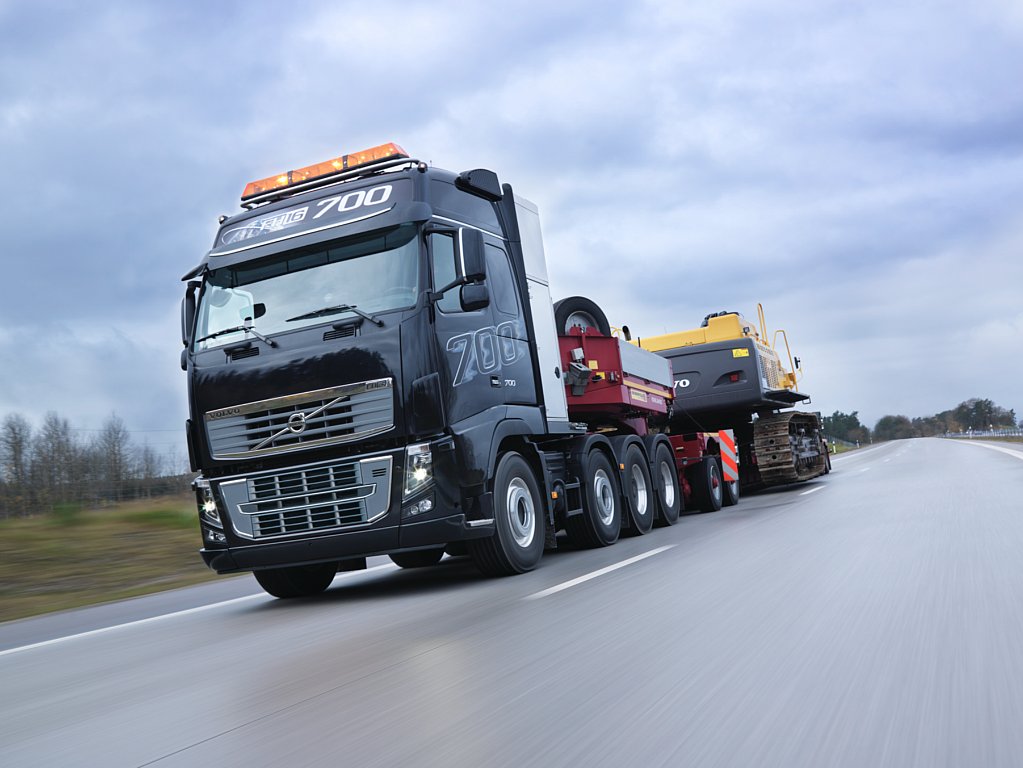Heavy haulage is the transportation of large, bulky, or heavy loads that cannot be moved using conventional vehicles. These loads often include items such as oversized machinery, construction materials, industrial equipment, and large infrastructure components like wind turbines and bridges. The industry plays a vital role in global infrastructure, supporting everything from the construction of monumental buildings to the development of renewable energy projects. Over centuries, the methods used to move these heavy loads have evolved dramatically, driven by technological advancements, increased efficiency, and the growing demands of a modern, global economy. This article explores the evolution of heavy haulage, from the early days of horsepower and manual labor to the modern-day super trucks equipped with cutting-edge technology. The journey from rudimentary transportation to engineering marvels showcases the ingenuity that has shaped how we move large and oversized loads across the world.
1. The Early Days: Horsepower and Manual Labour
In the pre-industrial era, the transportation of heavy loads relied heavily on manpower and animal power. People used simple tools like sledges, ropes, and rollers, while horses, oxen, and even elephants were enlisted to pull carts and wagons laden with heavy materials. The loads transported were typically much smaller than what modern trucks carry, but the reliance on brute strength and simple mechanisms meant the process was slow and labor-intensive.
The challenges of this period were numerous. Limited capacity meant that only relatively small loads could be moved at a time, and the roads were often unsuitable for heavy traffic. Furthermore, the physical strain on animals and workers was considerable, and inclement weather could easily delay or halt progress.
Example: One of the most iconic examples of early heavy haulage is the transportation of large stones for the construction of ancient monuments, such as the Egyptian pyramids or Stonehenge in England. These immense structures required the movement of massive stones, some weighing several tons. The transportation methods employed—using sledges pulled by oxen or dragged over logs—were primitive yet effective for the time, and these feats were accomplished with remarkable ingenuity, despite the technological limitations.
2. The Industrial Revolution: Steam-Powered Solutions
The Industrial Revolution marked a pivotal turning point in the history of heavy haulage. The introduction of steam power revolutionized not just manufacturing but transportation as well. Steam engines allowed for the creation of more powerful machines capable of pulling heavier loads and doing so more efficiently than ever before.
Steam-powered traction engines, or “road locomotives,” were among the earliest mechanical solutions for heavy transport. These engines could haul large loads over longer distances, reducing the reliance on animal power and manual labor. The ability to move heavy loads at greater speeds significantly advanced industrial expansion, particularly in industries such as mining, construction, and railway building.
Case Studies: One notable example of steam-powered heavy haulage was the construction of the railways. Steam engines were used to transport both materials and workers, and the development of railway lines created new routes for moving bulk materials such as coal, iron, and steel—key ingredients for the industrial revolution. These engines also played a significant role in the transportation of massive machinery for factories, fueling the rapid growth of industrial infrastructure.
3. The Rise of Internal Combustion Engines
The 20th century saw a further leap in transportation technology with the introduction of internal combustion engines. The shift from steam power to gasoline and diesel engines allowed for even greater efficiency and flexibility in moving heavy loads. These engines were lighter, more powerful, and capable of providing more consistent power over long distances.
The internal combustion engine gave birth to modern heavy-duty trucks and trailers. Vehicles designed for hauling large loads were developed with stronger frames, better suspension systems, and larger wheels, making it possible to transport bigger, heavier, and more complex loads than ever before. The development of the tractor-trailer combination, where a powerful truck (the tractor) pulls a large flatbed trailer, became the cornerstone of modern heavy haulage.
These new trucks were also more fuel-efficient and could travel longer distances, revolutionizing the logistics of industries worldwide. As a result, industries such as construction, manufacturing, and energy saw massive improvements in their ability to transport oversized machinery, raw materials, and completed products.
4. Modern-Day Heavy Haulage: Super Trucks and Technology
Today, heavy haulage has reached new heights of sophistication, with the introduction of super trucks that are capable of moving extremely large and heavy loads with impressive precision. These trucks are equipped with cutting-edge technology, including hydraulics, modular trailers, and advanced navigation systems that make moving oversized loads not only possible but safe and efficient.
Hydraulic systems are commonly used in modern trailers to distribute the weight of loads evenly, while modular trailers can be customized to accommodate a variety of load types and sizes. For example, wind turbine blades are some of the largest and most difficult loads to transport, requiring highly specialized vehicles capable of handling their size and weight. The ability to break down oversized loads into smaller, modular sections that can be reassembled on site has opened up new possibilities for transporting large infrastructure components. One of the fascinating developments in modern heavy haulage is the use of RGN trailer transport. RGN (Removable Gooseneck) trailers are specially designed for transporting large or oversized loads that conventional vehicles can’t handle. By enabling loads to be hauled with greater flexibility and safety, these trailers play a crucial role in efficiently moving massive infrastructure components—much needed in today’s rapid industrial growth.
In addition, advanced GPS systems and route planning software have streamlined the logistics of heavy haulage, ensuring that trucks avoid obstacles and comply with regulations on weight limits, road conditions, and clearance heights. Safety systems, such as real-time monitoring, load stability detection, and automated braking, are now integral to modern heavy haulage operations.
Example: Moving massive industrial machinery, such as turbines for power plants or giant pieces of oil drilling equipment, requires modern super trucks equipped with specialized trailers, often involving a convoy of vehicles to distribute the load’s weight and prevent damage. These operations, which often occur in remote or challenging environments, showcase the incredible engineering and planning that go into modern heavy haulage.
5. Environmental Considerations and the Future of Heavy Haulage
As the world becomes more environmentally conscious, the heavy haulage industry is embracing new technologies and practices to reduce its carbon footprint. The rise of electric and hybrid trucks is an exciting development, as these vehicles promise to significantly reduce emissions and noise pollution, particularly in urban areas.
Sustainable logistics is another key area of innovation. Companies are increasingly focusing on optimizing load management, reducing waste, and improving fuel efficiency. For example, the use of intelligent route planning and the growing trend of shared logistics are helping to reduce unnecessary trips and lower overall emissions.
Looking to the future, the heavy haulage industry is also exploring the potential of autonomous vehicles. Self-driving trucks could revolutionize the way large loads are transported, reducing the need for human drivers and improving safety through better control systems. These vehicles, equipped with AI and sensor technologies, could navigate roads with incredible precision, optimizing load delivery times and reducing risks associated with human error.
Conclusion
The evolution of heavy haulage has been nothing short of remarkable, from its humble beginnings relying on horsepower and manual labor to today’s super trucks powered by advanced engines and cutting-edge technology. Each stage of development has been driven by the need to transport ever-larger loads more efficiently, reflecting the demands of a growing global economy and advancing industries.
As we look to the future, it’s clear that innovation will continue to be the driving force behind the next phase of heavy haulage. Whether through electrification, autonomous vehicles, or sustainable logistics practices, the industry will play a crucial role in meeting the needs of an increasingly interconnected world.
Heavy haulage isn’t just about moving big things—it’s about ensuring the infrastructure that supports modern life is built, maintained, and expanded. As the demands of our global economy grow, so too will the capacity and capabilities of the heavy haulage industry. Exploring how this vital sector impacts industries and communities can inspire us all to appreciate the immense technological feats that enable progress and growth.



